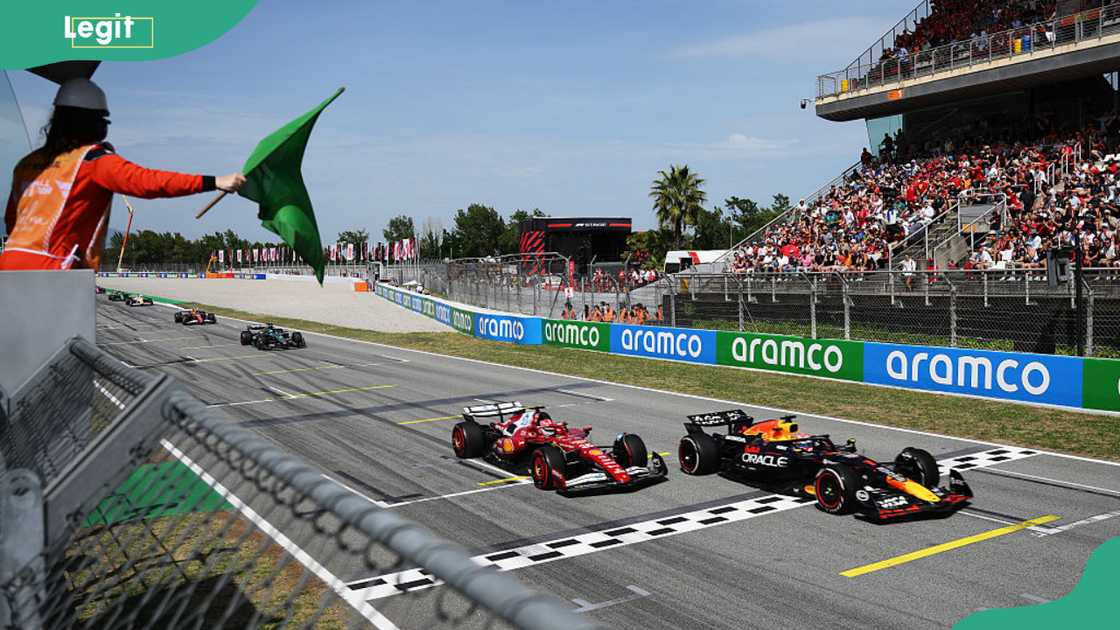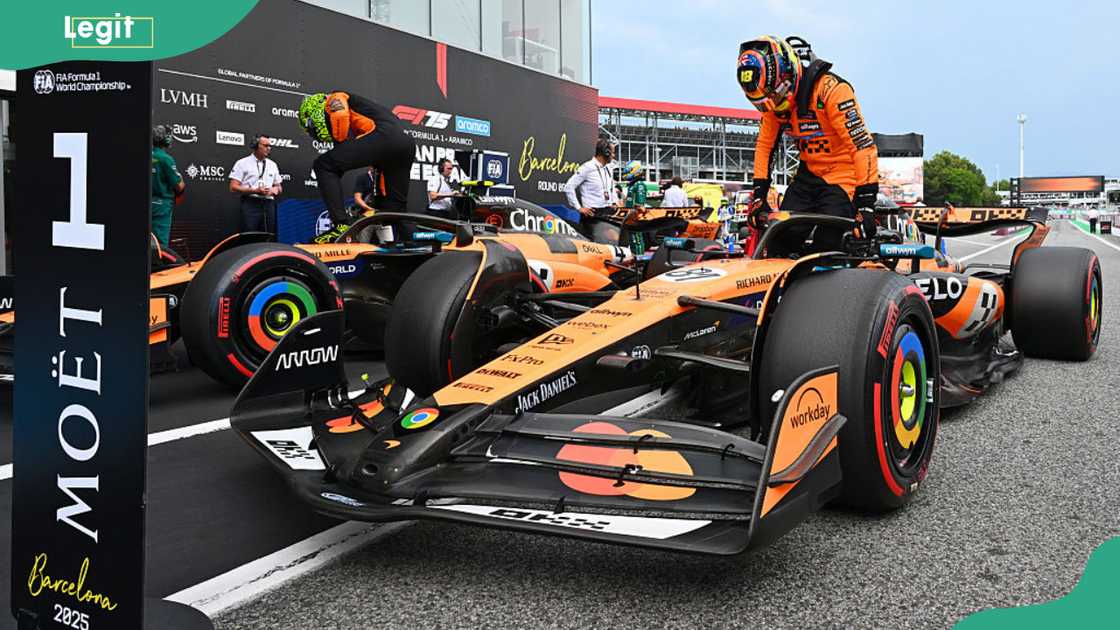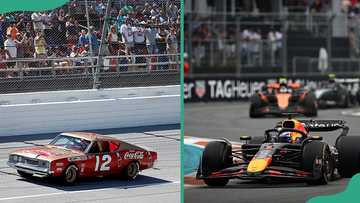How the F1 points system works: A complete guide to F1 scoring
The F1 points system awards points to the top 10 finishers in each race: 25 for first place, 18 for second, 15 for third, decreasing to 1 point for tenth place. It is the method Formula 1 uses to rank drivers and teams throughout the season. Learn how the F1 points system works in this detailed piece.

Source: Getty Images
TABLE OF CONTENTS
Key takeaways
- Points are awarded exclusively to drivers who finish within the top 10 positions in a race.
- Standard points allocation in F1 ranges from 25 points for 1st place to 1 point for 10th place.
- Points count toward two championships: the Driver's Championship for individuals and the Constructors' Championship for teams.
- Until the 2025 season, drivers earned an extra point for setting the fastest lap, but the FIA has removed this bonus ahead of the new season as part of several rule changes.
- Sprint races are occasionally held during the season, awarding points to the top eight finishers.
How the F1 points system works: F1 points system explained
In Formula 1, points are awarded based on race results and are crucial in determining the standings for both the Drivers’ and Constructors’ Championships. Below is an explanation of how the system works.
F1 race points: position breakdown

Source: Getty Images
Points are awarded only to the top ten freshers in a Formula 1 race. Drivers finishing outside the top ten do not receive any points. According to ESPN, here is how points are awarded in F1 races.
Position | Points |
1st | 25 |
2nd | 18 |
3rd | 15 |
4th | 12 |
5th | 10 |
6th | 8 |
7th | 6 |
8th | 4 |
9th | 2 |
10th | 1 |
Points system in F1 Sprints
To boost overtaking and action, the top eight Sprint finishers earn points, with eight for the winner. With no fastest lap bonus in 2025, Sprints are the only way to gain extra championship points. Sprint race points are distributed as follows:
Position | Points |
1st | 8 |
2nd | 7 |
3rd | 6 |
4th | 5 |
5th | 4 |
6th | 3 |
7th | 2 |
8th | 1 |
Sprint race points are only awarded if the leader completes over 50% of the scheduled Sprint distance.
Points awarded for shortened races
Since 2022, reduced points have only been given if a race is suspended and can't resume. If a race finishes, full points are awarded, no matter how many laps were completed. If not resumed, points depend on the distance covered.

Source: Getty Images
No points are awarded unless the leader completes at least two laps under green flag conditions, without Safety Car or Virtual Safety Car involvement. If this condition is met, points are then allocated based on the percentage of race distance completed, as outlined below.
FIA F1 Points Column 1 (two laps–25% race distance)
Column 1 points apply when a race is stopped and cannot continue, with more than two laps but not more than 25% of the planned race distance completed. The points are distributed as follows.
Position | Points |
1st | 6 |
2nd | 4 |
3rd | 3 |
4th | 2 |
5th | 1 |
FIA F1 Points Column 2 (25%—50% race distance)

Source: Getty Images
Points under Column 2 are awarded if a race is unable to continue after more than 25% but less than 50% of the scheduled distance has been completed. Points are then awarded as follows.
Position | Points |
1st | 13 |
2nd | 10 |
3rd | 8 |
4th | 6 |
5th | 5 |
6th | 4 |
7th | 3 |
8th | 2 |
9th | 1 |
FIA F1 Points 3 (50%–75%race distance)
Column 3 is used when a race is brought to a premature end and cannot be restarted, with over 50% but less than 75% of the scheduled distance completed. In this case, the points are allocated as follows:
Position | Points |
1st | 19 |
2nd | 14 |
3rd | 12 |
4th | 9 |
5th | 8 |
6th | 6 |
7th | 5 |
8th | 3 |
9th | 2 |
10th | 1 |
Can you get 27 points in F1?
Scoring 27 points in a single F1 race isn't possible. The maximum points per Grand Prix are now 25, awarded for a victory, as the fastest lap bonus point has been removed under the 2025 rules.
What is the 75% rule in F1?
The "75% rule" in F1 refers to the system where full points are awarded if the race leader completes at least 75% of the scheduled distance. If less than 75% is completed, a reduced points structure is used.

Source: Getty Images
Why is number 17 banned in F1?
The number 17 is retired in Formula 1 to honour Jules Bianchi, the French racing driver who tragically died in 2015 following a serious crash at the 2014 Japanese Grand Prix. As a tribute to his memory, the FIA permanently retired the number 17, preserving his legacy in the sport.
Now that you understand how the F1 points system works, you can enjoy the season even more, fully aware of how each race impacts the title fight. Whether it's race wins, Sprint races, or the battles in between, the points system fuels the intense competition that makes F1 so thrilling.
Legit.ng recently published an article about the youngest F1 driver. In recent years, more drivers have entered F1 before the age of 20, reflecting the sport’s growing openness to nurturing young talent. Max Verstappen holds the record as the youngest driver in Formula 1.
Seventeen-year-olds are no longer permitted to compete in Formula 1 mainly because of concerns about safety and maturity. Among the youngest drivers to debut are well-known names like Lance Stroll, Lando Norris, and Fernando Alonso. Learn more about the youngest F1 drivers in the post.
Proofreading by Kola Muhammed, copy editor at Legit.ng.
Source: Legit.ng







